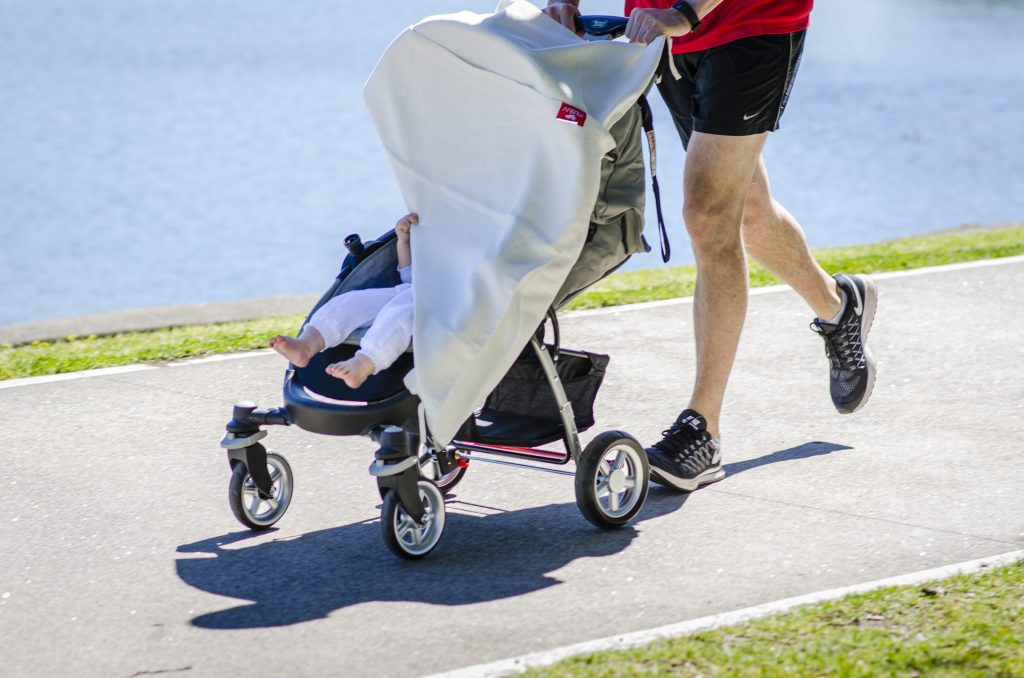5 Simple Ways To Protect Your Family’s Skin In The Sun
Protecting your family from the sun has been a real concern in Australia this summer. Not only have we just gone through one of the hottest Januaries on record, but there have been worrying stories of young babies having severe allergic reactions to sunscreen, and children getting unexpectedly sunburnt because their brand of sunscreen hasn’t provided the right level of protection.
So what’s the right way course of action? Here are 5 simple ways in which you can protect your family’s skin against sun damage.
Cover Up
Covering up is the most important way to avoid UV exposure. Experts say that putting a barrier (such as fabric) between the sun and the skin is the first line of defence against UV damage.
If you are shopping for clothing which is specifically sun protective, look out for a UPF 50+ label as this means it has the highest rating of sun protection possible for fabric. If not, look for clothes which have a tight weave but that are in themselves loose and breathable, to help you stay cool.
Time Your Outdoor Adventures
It’s always better to get the kids down to the beach early in the morning or late in the afternoon, rather than during the main part of the day. The UV levels tend to be lower at these times. These are also the safest times to pare back a little on sun protection, if you are at all concerned about their vitamin D intake.
Choose your family sunscreen carefully.
Don’t just grab the first bottle of brightly-coloured kiddie sunscreen you find on the chemist’s shelf. Do a little bit of research and perhaps try out creams or lotions (not sprays!) which have zinc as their main or sole active ingredient. Some zinc formulas can leave your kids looking look a little ghostly, but that’s definitely better than them looking like red lobsters.
Zinc formulas tend to be kinder on the skin than other types, especially ones with a whole bunch of active chemicals in them, but you may need to play around a bit until you find one that suits you and your kids. And don’t forget to do a patch test first.
Apply The Sunscreen Properly
The most common reason for a sunscreen fail is user error.
For a start, most of us don’t use nearly enough of the stuff to properly protect the skin. We apply it too sparsely and miss vital areas. Kids often wriggle around and don’t like the sensation of sunscreen being applied, but it’s vital to use enough to properly coat their skin.
If you imagine squeezing the sunscreen generously along their middle finger, this is a good guide for the minimum amount of sunscreen to use for each arm and for their head and neck. For each leg, the chest and the back, you might need two fingers’ worth or more.
The second mistake that most of us make might surprise you. Did you know you should be applying two coats of sunscreen? It’s like painting a wall. Because the surface of the skin is not even, there will always be tiny patches that are missed, and you need to apply that second coat to get full coverage.
In any case, never rely on sunscreen as your main or only method of sun care. With sun protection, the more types you use the better. And even a careful application of sunscreen is not likely to be as effective as a good clothing layer to block those pesky UV rays.
Wear A Hat
While a lot of us are good at making sure our kids wear sun hats, we might be a bit lax about wearing them ourselves.
But it’s not just important for protecting our own skins. When the grownups around them wear sun hats too, it reinforces the message to our kids that sun care is super important, and helps get them into a good, lifetime habit of sun protection.

Author Bio
Having ditched a career as a lawyer and become a mum, Natasha Jacquot decided to get serious about her passion for protecting delicate young skin against the sun.
Check out her blog and ultimate guide on looking after babies in the sun or have a browse around www.musluv.com.

